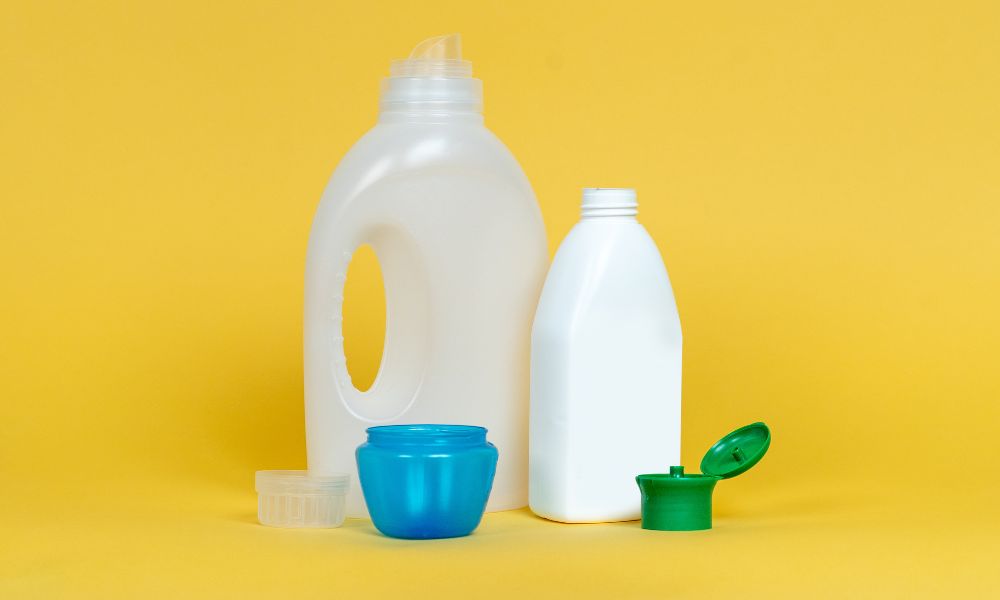Could chemical recycling help us overcome challenges in plastic recycling? Here’s what producer organisations think

The recycling rate of plastic packaging was 29% in Finland in 2021. This is still too low, as the European Commission has set a target for Member States of 50% by 2025 and 55% by 2030. Recent investments, such as to add new plastic collection points to the Rinki ecopoint network, have improved the situation.
Chemical recycling of plastics is also a possible solution. Most of the plastic waste generated in Finland is recycled mechanically by crushing and sorting it, before turning it into granules. Chemical recycling, on the other hand, is a process in which plastic is heated to high temperatures in oxygen-free conditions to produce pyrolysis oil, which is further processed before being used as raw material for new plastic products.
Chemical recycling is not the only solution
Pekka Tommola, CEO of Finnish Packaging Producers Ltd., does not see chemical recycling as a solution to increase the recycling rate, at least not as things stand.
“Most of the most significant types of plastics are already recycled through mechanical recycling, so the volumes sent for chemical recycling are quite small,” explains Tommola. PET and PVC, for example, are not suitable for chemical recycling.
According to Sanna Peltola, Finnish Packaging Producers Ltd.’s Operational Manager, cost-effectiveness is something that should be considered. “The total cost per tonne of recycled material may be significantly higher than for mechanical recycling. Even if chemical recycling is an option, we have to consider whether it is economically viable from the producer’s point of view,” she says.
The practical challenge is to calculate the impact of chemical recycling on the recycling rate since mechanical recycling is used as the basis for the calculation. Tommola thinks that the EU would need to agree on a set of rules to calculate the recycling rate for mechanical and chemical methods of recycling plastics.
“Hopefully, in the future, chemical recycling will allow us to make use of material that cannot be further processed through mechanical recycling,” says Tommola. However, he thinks that the key barriers to improving the recycling rate can be found elsewhere.
“The biggest obstacle is in people’s kitchens,” says Tommola. He hopes that both households and businesses will recycle more plastic packaging waste.
Recycling methods also play a part. “Producer organisations must choose the most efficient partner, one that can sort the plastic collected so it can be used in the future,” says Tommola.
Chemical recycling may have potential
Sumi Ltd.’s CEO Mika Surakka is more optimistic about the potential of chemical recycling and thinks that it could account for 10-20% of all plastic recycling in Finland in the future. Sumi and Wastewise Group Oy announced in October 2023 that they will start cooperation on chemical recycling of plastics.
“Mechanical recycling will always be the main method of recycling, and the chemical process will only be a complementary method used for those products that are particularly tricky to recycle or otherwise unsuitable for mechanical recycling. Some of the plastic that was previously turned into energy can now be sent for chemical recycling,” says Surakka.
The pyrolysis oil yield from chemical recycling is lower than the yield of mechanical recycling, but the usable oil has a wide range of applications. “Mechanically recycled plastic is usually of slightly lower quality and may contain impurities. Chemically recycled plastic is exactly the same as virgin plastic and as such is suitable for food-grade packaging,” says Surakka.
Surakka also points out that chemical recycling has the advantage of being more tolerant of impurities than mechanical recycling. Unlike the mechanical recycling method, the chemical process is not impacted by the thin aluminium layer that is used in some plastic packaging. Oxygen, however, is an impurity with regard to chemical recycling, which is why PET, which contains oxygen, cannot be recycled chemically.
Surakka is also aware of the current challenges of chemical recycling. “Chemical recycling is more costly, but it produces a higher quality end product, which is reflected in the selling price,” he says.
So, can chemical recycling increase the recycling rate of plastic packaging? “That’s not going to happen in one big step, but through lots of smaller steps. Chemical recycling will be significant in Finland though, and it may increase the recycling rate by 4-10%,” Surakka estimates.
However, he does not see chemical recycling of plastics as a shortcut to success. “The barrier to increasing the recycling rate is really the low collection rate, which we’ll have to increase,” says Surakka.
Producer organisations agree on this.